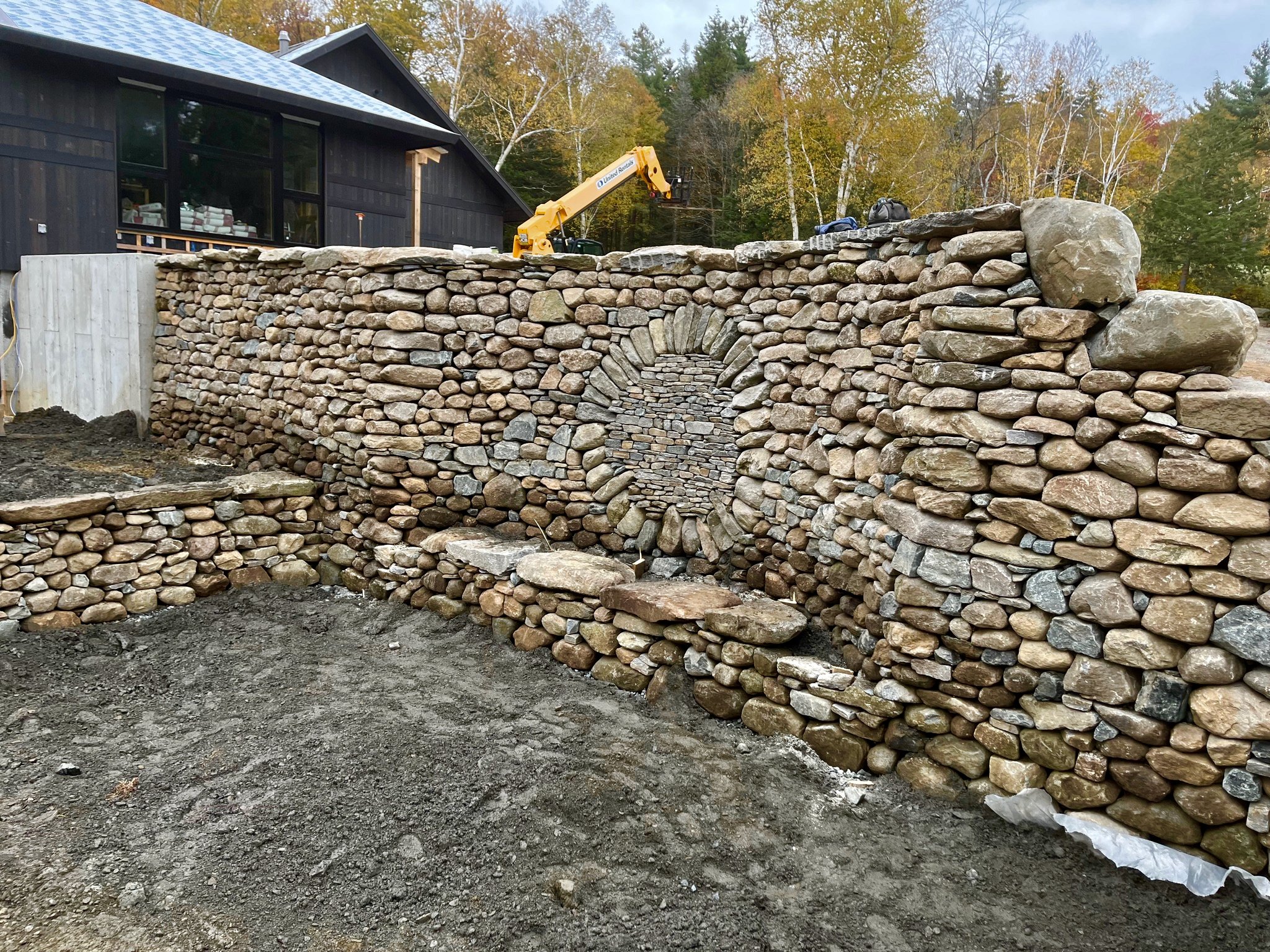Stone Endeavors
Has an admonishment ever turned into an affirmation for you? Back around 1978, when I replied to Jonny Regan’s question, “What’d take?”, about a job I’d just completed, I answered with what it had cost. Jonny had over fifty years experience and came out of a family of masons that got its start in the trade a century earlier. I was a wet-behind-the-ears self-taught mason looking for a mentor. “Never mind the cost, I don’t care about that! How long did it take?”, was his gruff retort.
Jonny was letting me know what mattered in the work we did, and what didn’t. Skill, efficiency and pride in a piece of lasting masonry was what counted. Being ephemeral, dollar tallies were barely worth mentioning.
Readers may well wonder “What’d it take?” when viewing images of the sunken garden space and surrounding hardscape I built last fall in Marlboro, Vermont. It was work done with skill, efficiency and pride, by me and a handful of compatriots. As with other stone endeavors, it required the marshaling of materials, equipment and craft.
Materials were provided by the earth, which is to say that they were either extracted or gleaned. Four grades of crushed stone were utilized in the foundations and interior sections of the walls, from 1½” up to 12”. Hundreds of cubic yards were quarried and delivered to the site. An equivalent volume of glacial till stone was utilized in the face of the walls. That material was harvested from the surface of the ground where it made landfall at the end of the last ice age.
Equipment operation was key to maintaining an efficient worksite. Site preparation and foundation installation were executed with a large excavator. The mechanical shifting and lifting of stone was carried out daily with a loader and mini excavator.
Five, highly skilled dry stone wallers contributed their time and expertise, in round-robin fashion, throughout the weeks of activity that created the sunken garden space, terrace gardens and greenhouse surround.
I now have a similar number of years of experience that Jonny Regan had when I first met him. Along with the experience has come the skills that helped develop the design and implementation of the sunken garden. Crafting a dry stone structure is to recognize possibilities, to focus on the task at hand, and to be continually preparing for what’s next.
If Jonny now asks me his question, “Wha’d it take?”, I’d answer, “Three months, start to finish.” I think he’d nod his approval.
This was a large project that put Elin and me in association with many other professionals including a general contractor, management team, excavation contractors, stone suppliers, truckers, architect, garden designer, and wallers. It’s to their credit, and the full support of the clients, that the process of building the sunken garden and surrounding walls went as smoothly as imaginable.








